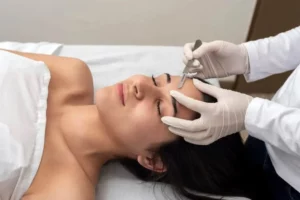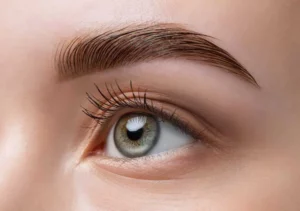Chemical Peels: Reveal Your Skin's Radiance Through Effective Exfoliation
Chemical peels have long been a trusted solution for those seeking rejuvenated and radiant skin. By harnessing the power of specific acids, these treatments delve deep into the skin’s layers, removing dead cells and revealing a fresher, more youthful complexion beneath. While often associated with luxury spa treatments, the science and efficacy behind chemical peels are grounded in dermatological research. Their benefits extend beyond aesthetics, addressing various skin concerns, from fine lines to acne scars.
As more individuals become conscious of their skin’s health and appearance, understanding the role and impact of chemical peels becomes increasingly essential. This knowledge empowers individuals to make informed decisions about their skincare, ensuring optimal results and skin health.
What are Chemical Peels?
Chemical peels are specialized skincare treatments that involve the application of a chemical formula to the skin’s surface. This solution is designed to cause the skin to exfoliate and ultimately peel off, hence the name. Once the old outer layer of skin has shed, it reveals a new layer of skin that is typically smoother and less wrinkled. The depth and intensity of the peel can vary, ranging from superficial peels, which only target the outermost layer of skin, to medium and deep peels that reach deeper skin layers.
These treatments are carefully formulated and can yield significant improvements in skin quality when done correctly.
The Science Behind Chemical Peels
A chemical peel works by breaking down the bonds between skin cells. The peel’s active ingredients, typically acids derived from natural sources, facilitate this process. For instance, glycolic acid comes from sugar cane, while lactic acid is sourced from sour milk.
When these acids are applied to the skin, they lower the skin’s pH to a level that disrupts the lipid bonds holding the dead skin cells together. This disruption causes the outermost layer of skin to loosen and eventually shed. Depending on the type and concentration of the acid used and the duration of its application, the peel can penetrate different depths of the skin. Superficial peels affect only the epidermis or the skin’s outer layer. In contrast, deeper peels can reach the underlying dermis, stimulating collagen and elastin production, proteins essential for skin elasticity and strength.
It’s this precise and controlled damage to the skin that prompts the body’s natural healing processes. The skin responds by accelerating cell turnover, pushing newer, healthier cells to the surface. While the concept of intentionally injuring the skin might seem counterintuitive, it’s this very principle that underpins the effectiveness of chemical peels in rejuvenating the skin at a cellular level.
Benefits of Chemical Peels
Chemical peels present a range of benefits that cater to various skin concerns. These treatments have proven their efficacy over time, from improving texture and tone to addressing more specific issues like acne or sun damage.
- Enhanced Skin Texture and Tone: Chemical peels effectively remove the outermost layer of dead skin cells, revealing a smoother and more even-toned complexion underneath.
- Reduction of Fine Lines and Wrinkles: By promoting collagen production and accelerating cell turnover, chemical peels can diminish the appearance of age-related lines and wrinkles.
- Treatment of Acne and Acne Scars: Certain chemical peels can unclog pores, reduce inflammation, and target acne-causing bacteria, effectively treating both active acne and residual scars.
- Diminishing of Hyperpigmentation: Issues like age spots, melasma, and other forms of hyperpigmentation can be lightened or even eliminated with the right chemical peel.
- Improved Skin Hydration: Some peels contain hydrating agents that boost the skin’s moisture content, leading to a plumper and more youthful appearance.
- Increased Skin Radiance: By shedding the dull, dead layer of skin, chemical peels reveal a brighter and more radiant complexion.
- Enhanced Product Absorption: By removing the outer skin barrier, skincare products can penetrate deeper, making them more effective in delivering benefits.
- Stimulation of Collagen Production: Deeper peels can reach the dermis, stimulating collagen production, a protein that provides skin elasticity and firmness.
- Reduction of Sun Damage: Chemical peels can reverse some visible signs of sun damage, including uneven skin tone and texture.
- Minimized Pore Appearance: By clearing out debris and reducing inflammation, pores can appear smaller and less noticeable.
Procedure: What to Expect During a Chemical Peel
A chemical peel can be a transformative experience for the skin. However, knowing what to expect at each stage of the procedure ensures that patients are well-prepared and can achieve the best possible results.
Preparation Phase:
- Consultation: A consultation with a dermatologist or skincare professional is essential before undergoing a chemical peel. They will assess your skin type, discuss your skincare goals, and determine the most suitable type of peel for you.
- Skin Prep: Depending on the type of peel, you might be advised to use specific skincare products for a few weeks before the procedure. This preparation helps prime the skin, ensuring better results and reduced risk of complications.
During the Procedure:
- Cleansing: The skin is thoroughly cleansed to remove makeup, dirt, or oils.
- Application: The chosen chemical solution is applied to the skin using a brush or cotton pad. The professional ensures even distribution and monitors the skin’s reaction.
- Duration: The solution remains on the skin for a specified duration, which can range from a few minutes to longer, depending on the type and depth of the peel.
- Neutralization: A neutralizing solution is applied to halt the peeling process for certain peels.
- Rinsing: The skin is gently rinsed with water or a post-peel solution to remove residual chemicals.
Post-Procedure Care:
- Cooling: A cooling agent or cold compress might be applied to soothe the skin and reduce any immediate redness or irritation.
- Moisturizing: A moisturizer, often containing sun protection, is applied to hydrate the skin and protect it from UV rays.
- Instructions: Patients are provided with specific aftercare instructions, which may include avoiding direct sun exposure, using gentle skincare products, and refraining from picking or scratching the treated area.
Recovery Time:
- Superficial Peels: Minimal downtime, with some redness and peeling that can last a few days.
- Medium Peels: A recovery period of about a week, with more pronounced redness and peeling.
- Deep Peels: Extended recovery time, possibly several weeks, with significant peeling, redness, and potential swelling.
Takeaway
Discover the transformative power of skincare with Simply Serene. Our expertly curated treatments cater to your unique needs, ensuring you achieve the radiant, youthful skin you’ve always desired. Whether you want to handle specific skin concerns or indulge in a refreshing beauty experience, Simply Serene is your trusted partner on this journey.
Every moment with our team is a step closer to unveiling your skin’s true potential. Only let another day go by with treating yourself to the best skincare. Contact us for your appointment and immerse yourself in the Simply Serene experience. Your skin is waiting; answer its call today!








